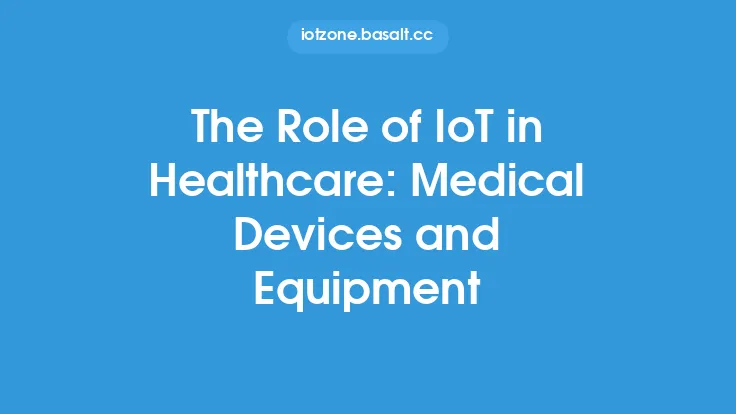The Internet of Things (IoT) has revolutionized the way we live and work, with billions of devices connected to the internet, collecting and exchanging data. However, this increased connectivity has also introduced new security risks, making device security a top priority in the IoT ecosystem. Two crucial components that play a significant role in ensuring device security in IoT are Secure Element (SE) and Trusted Execution Environment (TEE). In this article, we will delve into the world of SE and TEE, exploring their functions, benefits, and importance in securing IoT devices.
Introduction to Secure Element (SE)
A Secure Element (SE) is a dedicated hardware component designed to securely store and manage sensitive data, such as cryptographic keys, certificates, and other confidential information. SEs are typically used in devices that require a high level of security, such as payment cards, passports, and now, IoT devices. The primary function of an SE is to provide a secure environment for data storage and processing, isolated from the rest of the device. This isolation ensures that even if the device is compromised, the sensitive data stored in the SE remains protected.
Introduction to Trusted Execution Environment (TEE)
A Trusted Execution Environment (TEE) is a secure area of a device's main processor, where sensitive code and data can be executed and stored, isolated from the rest of the system. TEEs are designed to provide a secure environment for executing trusted applications, such as secure boot, authentication, and encryption. The TEE is typically implemented using a combination of hardware and software components, including secure boot mechanisms, memory protection, and cryptographic algorithms. The primary function of a TEE is to ensure that sensitive code and data are executed and stored in a secure environment, protected from unauthorized access or tampering.
Benefits of Secure Element and Trusted Execution Environment
The combination of SE and TEE provides a robust security framework for IoT devices, offering several benefits, including:
- Improved security: SE and TEE provide a secure environment for storing and processing sensitive data, reducing the risk of data breaches and unauthorized access.
- Isolation: SE and TEE isolate sensitive data and code from the rest of the device, preventing malicious code from accessing or tampering with sensitive information.
- Secure boot: TEE ensures that the device boots up securely, using a secure boot mechanism to verify the authenticity of the firmware and software.
- Authentication: SE and TEE enable secure authentication mechanisms, such as secure key storage and management, to ensure that only authorized devices and users can access sensitive data and services.
- Compliance: SE and TEE help IoT device manufacturers comply with regulatory requirements and industry standards, such as GDPR, HIPAA, and PCI-DSS.
Technical Implementation of Secure Element and Trusted Execution Environment
The technical implementation of SE and TEE involves a combination of hardware and software components. SEs are typically implemented using dedicated hardware, such as secure microcontrollers or cryptographic coprocessors. TEEs, on the other hand, are implemented using a combination of hardware and software components, including secure boot mechanisms, memory protection, and cryptographic algorithms. The implementation of SE and TEE requires careful consideration of several factors, including:
- Hardware-based security: SE and TEE require dedicated hardware components, such as secure microcontrollers or cryptographic coprocessors, to provide a secure environment for data storage and processing.
- Software-based security: TEEs require software-based security mechanisms, such as secure boot mechanisms, memory protection, and cryptographic algorithms, to ensure the secure execution of trusted applications.
- Key management: SE and TEE require secure key management mechanisms, such as secure key storage and management, to ensure the secure storage and use of cryptographic keys.
- Secure communication: SE and TEE require secure communication mechanisms, such as secure protocols and encryption, to ensure the secure exchange of data between devices and services.
Real-World Applications of Secure Element and Trusted Execution Environment
SE and TEE have several real-world applications in the IoT ecosystem, including:
- Smart homes: SE and TEE can be used to secure smart home devices, such as thermostats, lights, and security cameras, to prevent unauthorized access and data breaches.
- Industrial control systems: SE and TEE can be used to secure industrial control systems, such as those used in manufacturing, transportation, and energy management, to prevent cyber attacks and data breaches.
- Wearables: SE and TEE can be used to secure wearable devices, such as fitness trackers and smartwatches, to protect sensitive user data and prevent unauthorized access.
- Automotive systems: SE and TEE can be used to secure automotive systems, such as those used in connected cars, to prevent cyber attacks and data breaches.
Conclusion
In conclusion, Secure Element (SE) and Trusted Execution Environment (TEE) are two crucial components that play a significant role in ensuring device security in the IoT ecosystem. The combination of SE and TEE provides a robust security framework for IoT devices, offering several benefits, including improved security, isolation, secure boot, authentication, and compliance. The technical implementation of SE and TEE requires careful consideration of several factors, including hardware-based security, software-based security, key management, and secure communication. Real-world applications of SE and TEE include smart homes, industrial control systems, wearables, and automotive systems. As the IoT ecosystem continues to grow and evolve, the importance of SE and TEE will only continue to increase, making them essential components of any IoT device security strategy.





